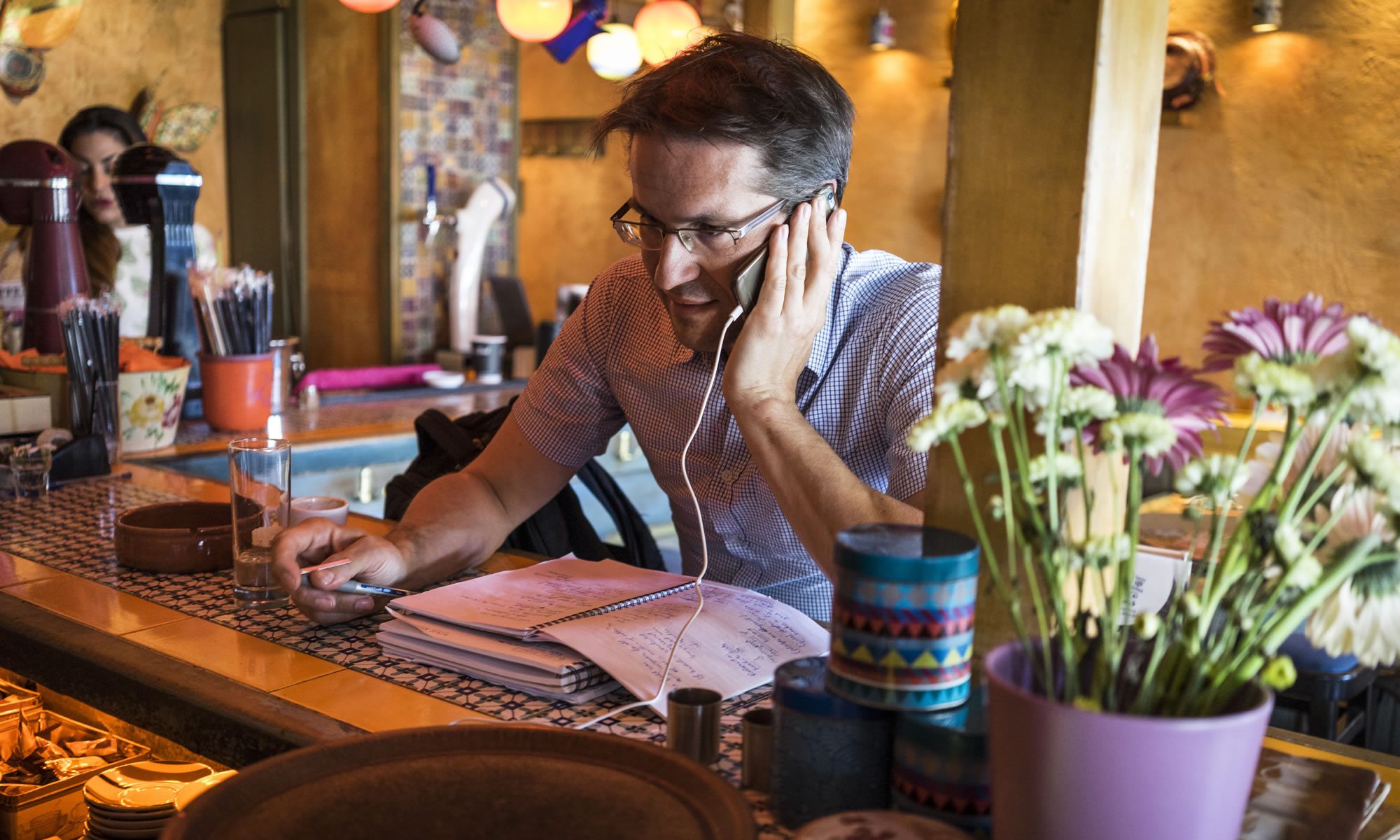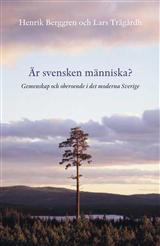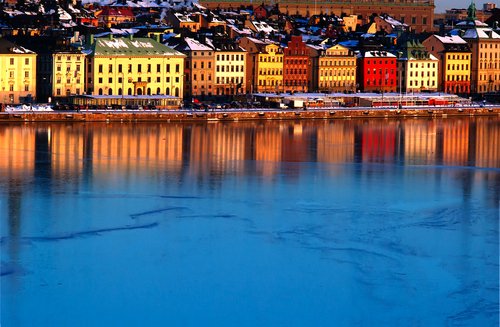How the November refugee summit can fail – and how to get a deal that works
In recent days ESI presented versions of this paper and these arguments to European policy makers.
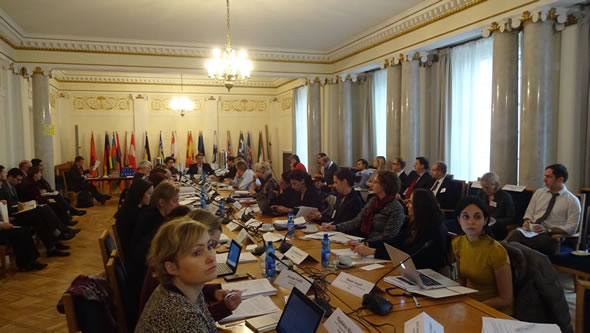
Presenting ESI proposal at OSCE expert panel in Warsaw
On Sunday 29 November the EU and Turkey will meet at an extraordinary summit in Brussels. The objective of this meeting is to make commitments that will stop the unregulated influx of currently more than 200,000 refugees per month into the EU from Turkey.
There are two ways in which this summit might fail. One would be the absence of any agreement. Since this would send a bad signal to the publics in EU member states, every effort will be made to avoid this.
However, there is a second way in which the summit can go wrong. It is even more dangerous. This is a scenario where the EU and Turkey agree on a deal, but merely set the stage for failure in the coming months, because the influx of refugees coming into the EU from Turkey will not be reduced. Both sides will then blame each other. Frustration will erode already abysmally low levels of trust. Precious time will be wasted and it might become harder to reach a workable deal later.
For the EU to avoid such a “disastrous success” on Sunday, member states need to understand why neither the EU-Turkey Joint Action Plan (from 15 October) nor the current draft statement to be agreed on 29 November will make any significant difference to the flow of refugees. The devil really lies in the detail.
What is wrong with the current draft statement
The current draft concluding statement for the Sunday summit has eleven paragraphs. What do they contain?
There are many references to aside commitments for Turkey and the EU to “meet and talk” more – at regular annual summits; at regular political dialogue meetings; at regular high-level meetings on thematic issues; at regular Association Council meetings; at a meeting at the end of 2016 to upgrade the existing customs union. More meetings and talking might be good, or bad, or meaningless, depending on the results, but it does not change things on the ground, and certainly not in the short term.
This leaves four “substantive” paragraphs: one on visa liberalisation and readmission; one on accession talks; one on EU financial assistance for Turkey; and one on “activating” the October 2015 EU-Turkey Joint Action Plan. To see why these measures will make no real difference to the flow of refugees in the Aegean, let us take a closer look at each.
Visa and readmission
The EU and Turkey launched a formal visa liberalisation process in December 2013. The goal of this process is to remove the requirement for Turkish citizens to obtain a visa for short (up to three months) visits of the EU’s Schengen zone as tourists or for business.
According to the EU roadmap on which this process is based, Turkey has to meet 72 requirements to qualify for visa-free travel. In an October 2014 assessment the European Commission found for 27 requirements that Turkey was “far from meeting this benchmark” or that there were “no particular positive developments to address them.”[1] (see below)
There was always a simple principle: once Turkey meets the conditions of the visa roadmap (at least as much as other countries from the Balkans did who received visa liberalisation in recent years) the Commission will propose to lift the visa requirement.
At present the EU and Turkey aim to agree on the following this Sunday:
“The European Commission will present a second progress report on the implementation by Turkey of the visa liberalization roadmap by early March 2016.”
The European Commission will “present its third progress report in autumn 2016 with a view to completing the visa liberalisation process i.e. the lifting of visa requirements for Turkish citizens in the Schengen zone by October 2016 once the requirements of the Roadmap are met.”
Note: this does not add anything to what was always the case! It was always true that the European Commission would ask member states to lift (by a qualified majority) the visa requirement once the requirements of the roadmap are met. There is no “concession” here. Nor is there any commitment by member states on how they will vote on this in October.
Which raises the question: would it not be better for the EU to see Turkey meet all criteria by March 2016? Especially if this is essential to reduce the flow of migrants across the Aegean?
In return for this non-concession, Turkey is expected to do something that looks superficially important but that will also make no difference:
The EU and Turkey “agree that the EU-Turkey readmission agreement will become fully applicable from June 2016.”
A track record of implementation of the EU-Turkey readmission agreement is one of the 72 conditions in the visa roadmap. The readmission agreement states that Turkey is to take back all third country nationals three years after the entry into force of the readmission agreement, which will be on 1 October 2017.
However, what does it really mean if Turkey agrees to make it “fully applicable” from June 2016? What will be the concrete impact on movements in the Aegean? Most people who reach the EU through the Greek islands are Syrians. Anyone who reaches the EU and applies for asylum cannot be returned to Turkey unless their asylum application is processed and rejected (i.e. they are found to be “economic migrants”, the language the draft statement uses). In 2014, only 5 percent of Syrian asylum seekers were rejected across the EU. Now the rejection rate might be even lower. The rejection cognition rates for other nationalities reaching the EU in high numbers, Afghanis and Iraqis, were also low in 2014.
This significantly reduces the number of people that could be returned. An asylum procedure is usually also a lengthy process since asylum seekers rejected at first instance can appeal and are allowed to stay until the court makes its decision. This often takes a year or more.
There is another problem. Very few migrants apply for asylum in Greece. They apply in Germany or Sweden or other EU countries further north. However, if they reach these countries through the Western Balkans, the EU-Turkey readmission agreement no longer applies. It requires that persons to whom it is applied “illegally and directly entered the territory of the Member States after having stayed on, or transited through, the territory of Turkey” (Art. 4). Those who take the Balkan route enter the EU “directly” from Serbia, not Turkey.
In fact, the EU-Turkey readmission agreement is unnecessary. What really matters is that Turkey already has a readmission agreement in force with Greece since 2002. Between 2002 and the end of last year, Greece asked for the readmission of 135,000 irregular migrants. Turkey accepted 13,100 of these, and in the end 3,800 (3 percent) were returned to Turkey. In 2015, Turkey has accepted more requests. But so far, only 8 people have actually been returned to Turkey this year – by the time Turkey is ready to admit them, they are usually no longer in Greece.[2]
Readmission of irregular migrants from Greece to Turkey
| Year | Migrants whose readmission Greece requested | Migrants accepted by Turkey | Migrants actually readmitted |
| 2012 | 20,464 | 823 | 113 |
| 2013 | 3,741 | 370 | 35 |
| 2014 | 9,691 | 470 | 6 |
| Jan-Sept 2015 | 8,727 | 2,395 | 8 |
This means concretely that the full entry into force of the EU-Turkey readmission agreement in summer 2016 does not add anything to what the Greece-Turkey readmission agreement already provides for. It does not apply to those who apply for asylum and are waiting for the decision. It does not apply to those who obtain asylum. And legally it does not apply to rejected asylum seekers or irregular migrant who have reached EU territory after transiting through the Western Balkans.
As currently formulated, the commitments to visa liberalisation and readmission appear strong and raise expectations but are in fact weak and inconsequential. They set the stage for another round of mutual recriminations, acrimony and disappointment. And they will not change the dynamic of refugees crossing the Aegean.
Accession process “acceleration”
At the summit, the EU will also commit to open one chapter in the EU accession talks, in December. This sounds good, but what does it actually mean?
Note that this does not actually constitute an “acceleration” of Turkey-EU accession talks. More than one decade after the start of the accession talks, 14 out of 34 negotiating chapters have been opened. In the first five years (2005-2010), 13 chapters were opened; in the second five years (2010-2015) 1 chapter was. Now 1 more will bring the total number to 15. This is still an excruciatingly slow process.
Note also that this is the only commitment concerning enlargement that the EU is planning to make. While there is “language” (as diplomats might say) referring to five other chapters, which have been blocked by Cyprus for many years, all the EU promises here is that the Commission will do “preparatory” work “without prejudice to the position of member states”. In plain language this means that the preparatory work may lead to nothing at all if Cyprus maintains its blockage.
In fact, the problem goes deeper. What does opening a chapter in December mean for Turkish citizens? The chapter concerned is “Economic and monetary policy” (chapter 17). One of the main issues that the chapter covers is the independence of central banks.
According to the recently published 2015 Turkey Progress Report, the past year has seen “increased political pressure on the central bank [which] undermines its independence and credibility.” Will this change just because the chapter will be opened? For the Turkish government, having influence on the central bank is convenient. Maintaining it comes at no cost as long as there is no real prospect of joining the EU. But carrying out reforms is acrtually the only real way for Turkey to “reenergize” the EU accession process. Everything else is political theatre.
Financial assistance
The EU also promises money for the refugees in Turkey:
“The EU will provide immediate and continuous humanitarian assistance in Turkey. It will also expand significantly its overall financial support.
A Refugee Facility for Turkey was established by the Commission to coordinate and streamline actions financed in order to deliver efficient and complementary support to Syrians under temporary protection and host communities in Turkey.
The EU is committed to provide an initial 3 billion euros of additional resources from the Union’s budget and contributions from Member States. The need for and nature of this funding will be reviewed in the light of the developing situation.”
Note: the money is not yet available, even though the EU is committed to mobilising it and working on it. 500 million are to come out of the EU budget and 2.5 billion from member states. If and when they will provide this sum of money is unknown. Member states have also committed to increasing funding for the EU’s Syria Trust Fund, which addresses the needs of Syrian refugees in Turkey and other countries of the region. Since September, they have pledged only 49 of 500 million.[3]
The Refugee Facility will become operational on 1 January 2016. A Steering Committee will provide strategic guidance, coordinate with other funding mechanisms, and decide on which actions will be financed. Turkey will be represented on this committee in an advisory capacity.[4] This is commendable. Many Syrian refugees in Turkey are in need of humanitarian assistance, and many of their children are in need of school education; only 200,000 of the 700,000 school-age children actually go to school, due to the language barrier and limited capacities of Turkish schools.
However, even if the education problem were resolved and all Syrian refugees in need received humanitarian aid, would this convince them to stay in Turkey? Many refugees are looking for a place where they can start new lives after many years of waiting – where they can work (in Turkey they are not allowed to), re-train if needed, where there is assistance if they do not find a job straight away, where their children receive good education, which offers them a long-term perspective. In this regard, Germany will remain more attractive in many ways.
The language in the current draft declaration on what Turkey promises to do in order to offer a credible perspective to Syrians in the country remains vague and general (“…Equally, they welcomed the intention of Turkey to adopt immediately measures to further improve the socio-economic situation of the Syrians under temporary protection.”). This will not keep any Syrians from moving to the EU.
Activating the joint action plan
There is one more point in the statement that promises more than it can deliver:
“Turkey and the EU have decided to activate the Joint Action Plan that had been agreed until now ad referenda on 15 October 2015, to step up their cooperation for support of Syrians under temporary protection and migration management to address the crisis created by the situation in Syria. The EU and Turkey agreed to implement the Joint Action Plan which will bring order into migratory flows and help to stem irregular migration.”
How the joint action plan will help to stem irregular migration is not really explained. The draft statements mentions three specific points, all vague. One is cooperation on “economic migrants”:
“As a consequence, both sides will, as agreed and with immediate effect, step up their active cooperation on economic migrants, preventing travel to Turkey and the EU, ensuring the application of the established bilateral readmission provisions and swiftly returning economic migrants to their countries of origin.”
The problem is obvious again: in order to determine who is an economic migrant, an asylum procedure must be completed. How many asylum applications can Greece deal with, and how long will this take? Germany with a huge administration has been able to issue 32,000 decisions on asylum in October. If Greece takes too long this will not have any “immediate effect.”
There is also the – vague – promise to improve the condition of Syrians now in Turkey:
“Equally, they welcomed the intention of Turkey to adopt immediately measures to further improve the socio-economic situation of the Syrians under temporary protection.”
Finally, there is the commitment every EU country makes in every similar statement, from Greece to Croatia to Slovenia, fighting people smugglers. It is not clear why Turkey should be more successful in this endeavour than any other states in South East Europe, in particular since everyone who travels to Greece and is stopped is able to try again until it works.
A deal that works: Merkel Plan 2.0
In recent weeks ESI analysts presented an alternative plan in many European capitals (Berlin, Brussels, Stockholm, The Hague, Vienna, Warsaw). This was an elaboration of the Merkel Plan which ESI published on 4 October:
- The European Council on Sunday invites the European Commission to begin right away the process of lifting the Schengen visa requirement for Turkey. This legal process will necessarily last a few months. It should hold out a concrete promise to Turkish citizens: “If Turkey implements the existing readmission agreements with Greece and Bulgaria in full and agrees to take back all new arrivals to these two countries from 1 January 2016, and implements a concrete set of other priority conditions from the roadmap till March, then Turkish citizens will be able to travel without a visa to the EU from 1 April 2016.”
- Turkey’s new asylum authority will start to issue decisions in response to asylum claims already in December. Following this Greece declares that it will consider Turkey a safe third country from 1 January 2016.
- Turkey and Greece, with support from others (Frontex, the European Asylum Support Office and other EU countries) prepare logistically for Greece to send back refugees to Turkey after 1 January 2016.
- Germany, Austria, Sweden, the Netherlands, France and other countries in a coalition of the willing commit to take large contingents of Syrian refugees directly from Turkey. The process of identifying refugee families will begin on 1 January 2016. The first refugees will leave Turkey in parallel to the first readmissions from Greece in early 2016.
- If this readmission to Turkey proceeds as planned, the Justice and Home Affairs Council and the European Parliament will vote in March in favour of lifting the visa requirement for Turkish citizens. The decision becomes effective on 1 April 2016.
- The EU and Turkey immediately conduct a joint needs assessment to provide assistance to the Syrian refugees in Turkey, with a focus on ensuring education for all school-age children (currently 500,000 out of 700,000 Syrian school-age children do not go to school). They identify the number of teachers needed, where they can be found, which buildings to use for classes, which equipment and textbooks are necessary, and how much all of this will cost. EU assistance will be visible to the Turkish public. In parallel Turkey will propose a gradual opening of the labour market to Syrians who enjoy protection in Turkey.
[1] European Commission, Report on progress by Turkey in fulfilling the requirements of its visa liberalisation roadmap, 20 October 2014.
[2] Data provided to ESI by the Hellenic Police.
[3] European Commission press release, State of Play: Measures to Address the Refugee Crisis, Member States’ financial pledges since 23 September 2015, communicated as of 27 November 2015.
[4] European Commission press release, EU-Turkey Cooperation: A €3 billion Refugee Facility for Turkey, 24 November 2015.
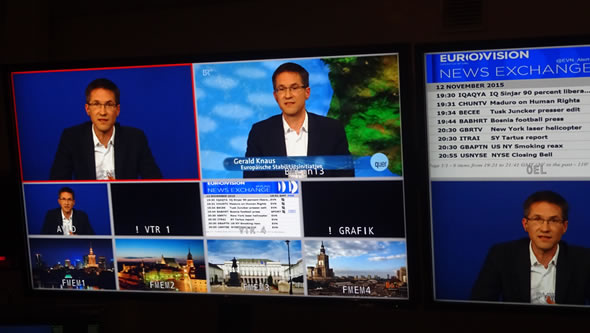
Interview on refugee issue on German TV
